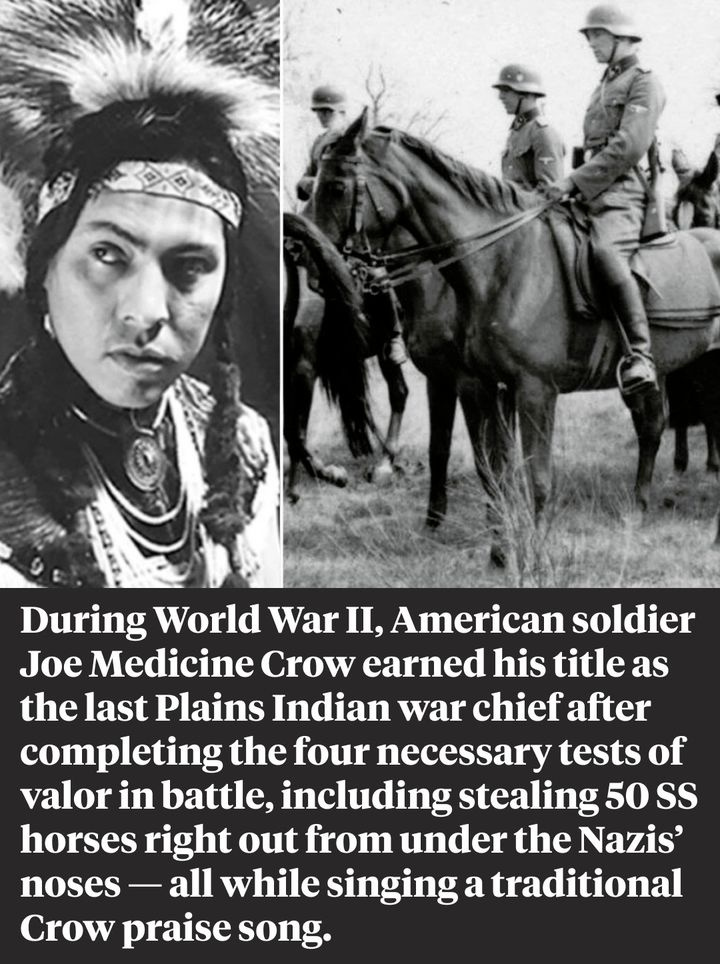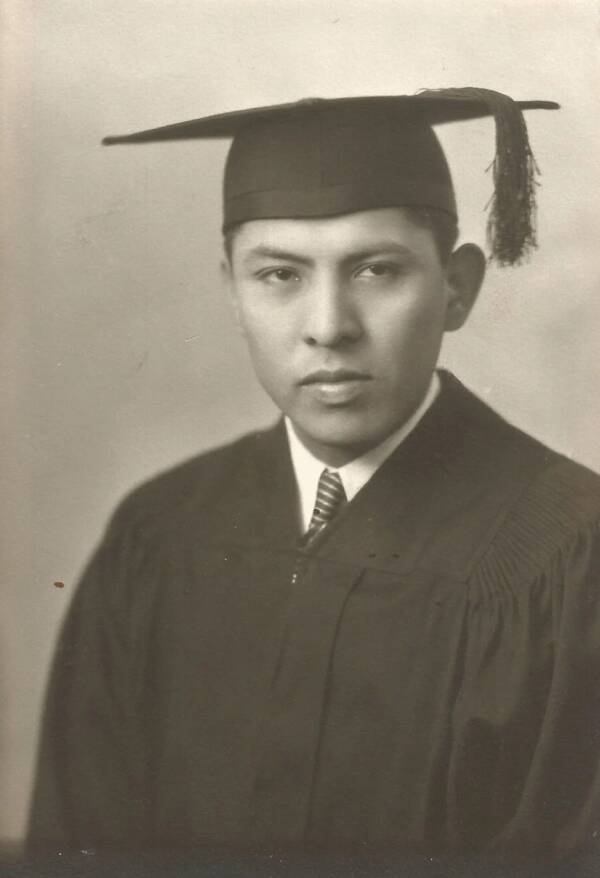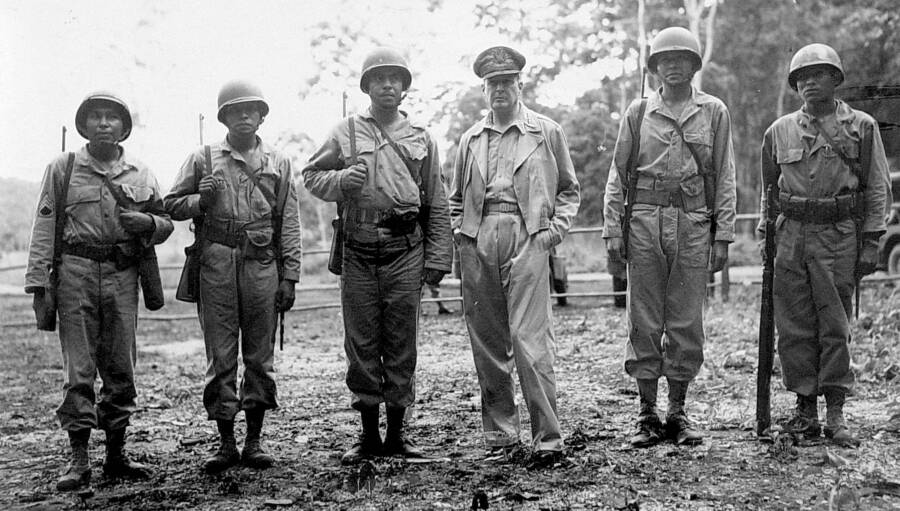The Inspiring Legacy of Joe Medicine Crow: The Plains War Chief Who Fought the Nazis
Joe Medicine Crow, born in 1913 on the Crow Reservation in Montana, was not just any ordinary man. He was a warrior, a historian, and the last living Plains Indian war chief, a title that encapsulates a rich history of bravery, tradition, and cultural preservation. Medicine Crow’s story is as remarkable as the legacy he left behind, having fought the Nazis during World War II, fulfilling the ancient warrior’s code of his people, and securing a place in history that few could ever dream of.
Joe Medicine Crow’s Early Life and Warrior Upbringing
Raised in the warrior tradition of the Crow Nation, Joe Medicine Crow grew up with the rich oral history of his ancestors. His grandfather, White Man Runs Him, had been a scout for General Custer before the infamous Battle of Little Bighorn, and his other grandfather, Chief Medicine Crow, was a respected war hero. These men were legends in their own right, and their stories helped shape young Joe’s view of the world.

From an early age, Joe learned the essential skills of a warrior: bareback horseback riding, survival in the harsh Montana winters, and hunting. But it wasn’t just physical training—Joe was also taught the values of courage, resilience, and the importance of preserving Crow traditions.
The Path to Becoming a War Chief
Becoming a war chief in the Crow Nation wasn’t a simple achievement. It required the completion of four difficult tasks that tested both physical and mental fortitude. The warrior had to touch a living enemy, steal an enemy’s weapon, lead a successful war party, and steal a horse from the enemy. These tasks, each one a monumental feat, were passed down through generations. But as time went on and Native American culture was suppressed, these traditions became harder to uphold.
Joe Medicine Crow, however, accomplished these feats in a way few could have imagined—on the battlefields of France and Germany during World War II, far from the traditional Plains battlegrounds.
Joe Medicine Crow’s Service in World War II
In 1943, Joe volunteered for the U.S. Army during World War II, leaving behind his studies in history and anthropology. Assigned to scout for the 103rd Infantry Division, Joe found himself in France by the end of 1944, pushing back the Nazis and heading into Germany. It was here that he would fulfill the requirements to become a war chief.
Before battle, Joe adhered to Crow traditions by painting two red war stripes on his arms and carrying a sacred yellow eagle feather—a symbol of his warrior spirit and connection to his people. However, completing the ancient warrior tasks in the midst of modern warfare seemed unlikely.
Video : Joe Medicine Crow became a war chief in WW2
Achieving the Four Feats of a War Chief
Touching a Living Enemy and Stealing a Weapon
In a daring raid on a small French town, Joe found himself in an alley facing a German soldier. Using his rifle, Joe knocked the soldier’s gun to the ground, thus completing the first two tests. He touched a living enemy and stole the soldier’s weapon, both requirements for becoming a war chief.
Leading a Successful War Party
Joe’s leadership skills were tested when German soldiers surrounded his company. With the situation looking dire, Joe’s commanding officer entrusted him with leading a mission to retrieve ammunition under enemy fire. Despite the land mines, overwhelming numbers, and enemy artillery, Joe successfully led seven men, saving his company and proving himself as a natural leader—fulfilling the third requirement to become a war chief.
Stealing a Horse from the Enemy
The final feat was the most challenging, especially considering the mechanized nature of World War II warfare. However, horses were still used for transportation, particularly by the Nazis, who relied on them during their retreat. Joe saw his opportunity when he tracked down Nazi SS troops on horseback during their chaotic retreat.

In the early morning hours, Joe snuck into the enemy camp and, using traditional Crow methods, created a bridle from a short rope. He mounted one horse and created a stampede of over 50 horses, causing havoc in the Nazi ranks. This final act completed his journey to becoming a war chief.
Recognition and Legacy
After the war, Joe Medicine Crow returned to his people, and the elders of the Crow Nation officially named him a war chief. But his legacy didn’t end there. Joe’s contributions went far beyond his time in the military. In 1948, he became the official historian and anthropologist for the Crow Nation, helping to preserve their history and teach younger generations about their traditions.
His efforts to teach the story of the Battle of Little Bighorn, the most significant battle in Crow history, included scripting reenactments based on the oral histories he had been told as a child. Joe worked tirelessly to ensure that his culture was not forgotten.
In 2009, at the age of 95, Joe Medicine Crow received the Medal of Freedom from President Barack Obama. His acceptance of the award was marked by a ceremonial dance, which was a symbol of his pride and respect for both his heritage and his service.
Joe passed away in 2016 at the age of 102, leaving behind a legacy that will be remembered for generations to come. He was the last living Plains Indian war chief, a title that had been passed down for centuries, but one that died with him.
Video : The Last War Chief: Joe Medicine Crow’s Astonishing Feats of Badassery During World War II
A Lasting Impact and Continuing Legacy
Joe Medicine Crow’s life serves as a testament to resilience, courage, and the preservation of culture. Through his actions during World War II, Joe not only upheld the ancient warrior traditions of his people but also solidified his place in American history. He became a bridge between two worlds—the old world of the Crow Nation and the modern world of the U.S. military—and embodied the values of both.
His nephew, Carson Walks Over Ice, came close to fulfilling the war chief’s four feats during the Vietnam War, but he was unable to steal a horse—though he humorously remarked that capturing elephants should have counted for something. Joe’s legacy remains unchallenged, and his story continues to inspire Native Americans and non-Native Americans alike.
Conclusion: The Warrior Spirit Lives On
Joe Medicine Crow’s remarkable life is an enduring symbol of what it means to honor one’s heritage, fight for justice, and lead with integrity. As the last living Plains Indian war chief, his passing marked the end of a tradition that had lasted for centuries. But his legacy lives on through the stories he told, the history he preserved, and the generations he inspired.

Joe Medicine Crow’s bravery and resilience in the face of overwhelming odds serve as a powerful reminder that the warrior spirit is not bound by time, geography, or circumstance. Whether on the battlefields of World War II or in the quiet corners of the Crow Reservation, his story will continue to echo through history, inspiring future generations to rise to the challenge and carry the torch of their ancestors forward.